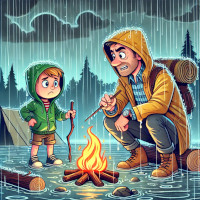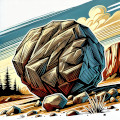How to Start a Fire in Any Condition
Starting a fire is a crucial survival skill, and being able to do so in any condition can mean the difference between comfort and discomfort, or even survival in extreme cases. Whether you’re faced with wet wood, windy conditions, or a lack of traditional fire-starting tools, these tips will help you get a fire going...
Understanding the Fire Triangle
To start a fire in any condition, you need to understand the three essential components of fire: heat, fuel, and oxygen. Without any one of these, a fire cannot ignite or sustain itself. Whether you’re using a lighter, matches, or a flint and steel, your goal is to bring together all three elements effectively.
Gathering the Right Materials
Start by gathering tinder, kindling, and fuel. Tinder is the smallest, most flammable material — dry grass, cotton balls, or fine wood shavings work well. Kindling is slightly larger material, such as twigs or small branches, while fuel includes larger logs that will keep your fire burning.
If you’re in a wet environment, look for dry wood under overhangs, inside hollow logs, or by breaking dead branches off trees rather than picking them off the ground. Bark from birch trees and pine needles can be lifesavers when everything else is damp.
“The proper function of man is to live, not to exist. I shall not waste my days in trying to prolong them. I shall use my time.”
Building the Fire Structure
There are several effective methods for building a fire, including the teepee, log cabin, and lean-to styles. In wet or windy conditions, the lean-to style is particularly effective because it shields the fire from the elements while allowing airflow.
Start with a base of dry twigs and your chosen tinder, then place larger sticks in the shape of a teepee or lean-to around the tinder. This structure will allow your fire to grow by ensuring that oxygen can freely circulate.
Starting the Fire: Techniques and Tools
When starting a fire in less-than-ideal conditions, a few techniques can make all the difference. If you have a lighter or waterproof matches, protect the flame with your hands and light the tinder directly. If you're using a ferrocerium rod, make sure the spark falls onto a fluffy, dry piece of tinder.
Chemical fire starters, such as cotton balls soaked in petroleum jelly or commercial fire starter cubes, are excellent in difficult conditions. They burn long enough to ignite damp wood, making them a great backup plan.
Maintaining the Fire
Once your fire is lit, maintaining it is crucial. Gradually add larger pieces of wood as the flames grow, ensuring not to smother the fire. Arrange the logs so that the fire can "breathe" — oxygen is just as important now as when you first ignited the tinder.
Conclusion: Be Prepared for Any Condition
Starting a fire is a skill that requires knowledge, practice, and a little patience. No matter the conditions, understanding the basics of fire, having the right materials, and using proper techniques will greatly increase your chances of success. Practice these skills often, and the next time you're in the wild, you'll be able to confidently start a fire no matter what Mother Nature throws at you.
Reply to thread







Discussion
Sep 28th | FireStarter123
Great advice on using a lean-to structure for windy conditions. It really works!
Sep 24th | SurvivalSavvy
I never leave without my ferrocerium rod. It's a lifesaver when matches run out.